‘Old wine in new bottles’ must be the most protean idiom in the English language. I encountered it a few years ago, as a title to an article by the Romanian grandmaster Mihail Marin, who likes to lean upon his deep knowledge of the chess classics to elucidate games played in the modern era. (Recently he published a book of the same name, which grew out of a series of such articles.) That such vintage wisdom might still find favour with contemporary palates is, for Marin, something to celebrate.
So I was perplexed to learn that the phrase also refers to the practice of sprucing up something tired and unappetising. In neutral terms, ‘window dressing’, though when the object is a doomed relationship, I gather the Italians have a pungent phrase, ‘cavoli riscaldati’: reheated cabbage. At any rate, serving ‘old wine in new bottles’ can be somewhere between lazy, and cynical. Nothing to celebrate there.
But then there’s ‘new wine in old bottles’, to signify commercial duplicity, in passing off an immature wine as something more sophisticated. Or it may refer to a biblical parable (Luke 5:37) ‘And no man putteth new wine into old bottles; else the new wine will burst the bottles, and be spilled, and the bottles shall perish.’ Baffling, perhaps, but those bottles were once wine-skins, which would be made brittle by storing the first batch of wine, and might not survive a second fermentation. In other words, a false economy.
Since over-the-board play is currently off the menu, the Four Nations Chess League (4NCL) has been revitalised by moving online, while the traditional league remains on a break. For this old wine in a new bottle (in the best sense!), there was a palpable appetite, with 172 registered teams, and 344 games played in the opening round on 7 April. The games were played on the free ‘lichess.com’ server, and a junior event is also set to commence soon.
One of Marin’s articles explored the ‘hedgehog’ setup which was used in this game from the online 4NCL. Black aims for a compact but poised setup within the first three ranks, and waits for an opportunity to strike in the centre. In this game Black sacrifices an exchange to achieve the d6-d5 break, and, in thematic hedgehog style, his pieces coordinate beautifully. Facing some uncomfortable choices, White soon stumbles into desperate trouble. The exchange sacrifice reminded me a little of Karpov–Andersson, another archetypal hedgehog game played in Milan in 1975.
Adam Taylor (Wood Green)–Julius Schwartz (Bon Accord A)
4NCL online, April 2020
1 e4 c5 2 Nf3 e6 3 d4 cxd4 4 Nxd4 a6 5 c4 Qc7 6 Nc3 Nf6 7 a3 Be7 8 Be2 O-O 9 O-O d6 10 Be3 Nbd7 11 Rc1 b6 12 Qd2 Bb7 13 f3 Rac8 14 Rfd1 Rfe8 15 Bf1 Qb8 Black has set up a typical hedgehog formation. 16 Qf2 Ne5 17 Na4 d5!? A thematic break 18 Nxb6 dxe4 19 Nxc8 Rxc8 Black’s pieces bear down on White’s kingside from afar. One threat is 20…exf3 21 gxf3 Bxf3! 22 Nxf3 Nfg4! 20 f4 Neg4 21 Qg3 Bd6 22 Ne2 Nxe3 23 Qxe3 Bc5 (see diagram) 24 Nd4? Walking into an unshakeable pin. 24 Rd8+! was essential. 24… e5 25 fxe5 Qxe5 26 Be2 26 b4 Ng4! wins. 26… Rd8 27 Kh1 Bxd4 28 Qb3 Rb8 29 c5 Bxc5 30 Bxa6 Ng4 31 Qg3 Qxg3 32 hxg3 Nf2+ 33 Kh2 Bxa6 White resigns
Got something to add? Join the discussion and comment below.
Get 10 issues for just $10
Subscribe to The Spectator Australia today for the next 10 magazine issues, plus full online access, for just $10.
You might disagree with half of it, but you’ll enjoy reading all of it. Try your first month for free, then just $2 a week for the remainder of your first year.

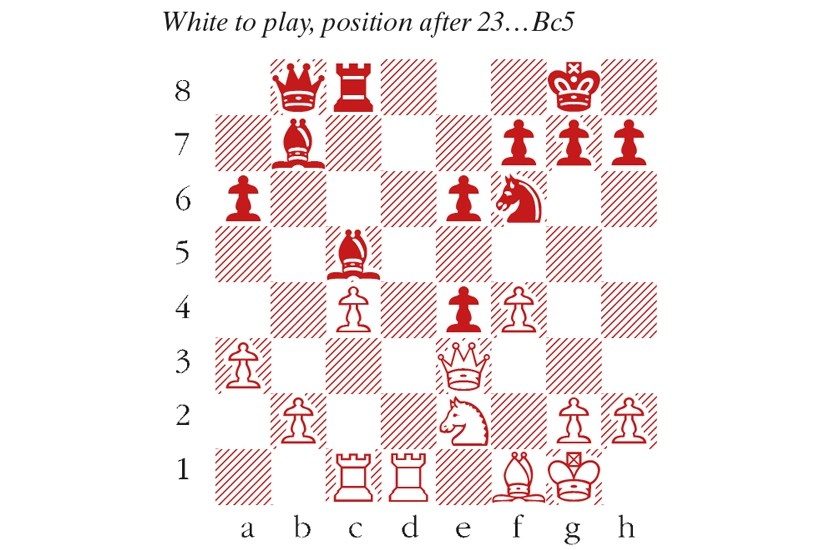

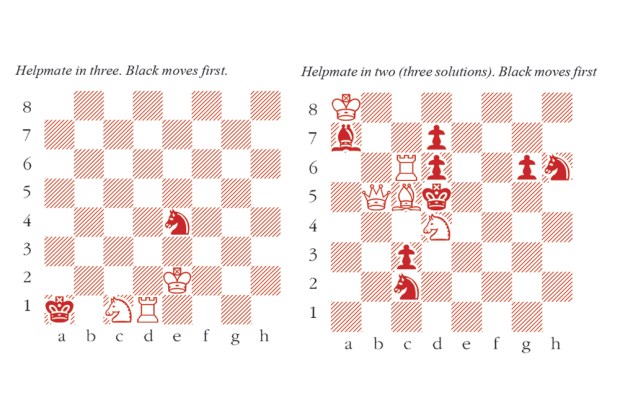
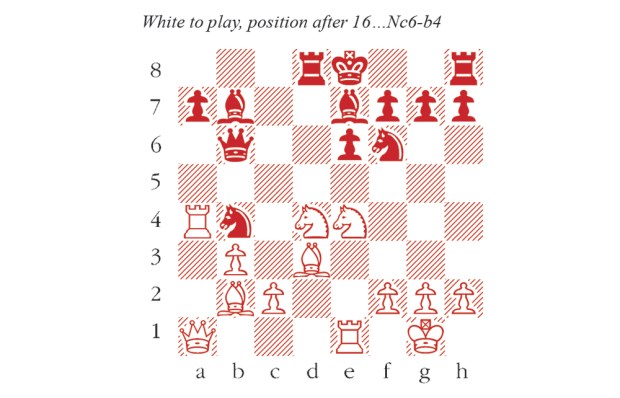
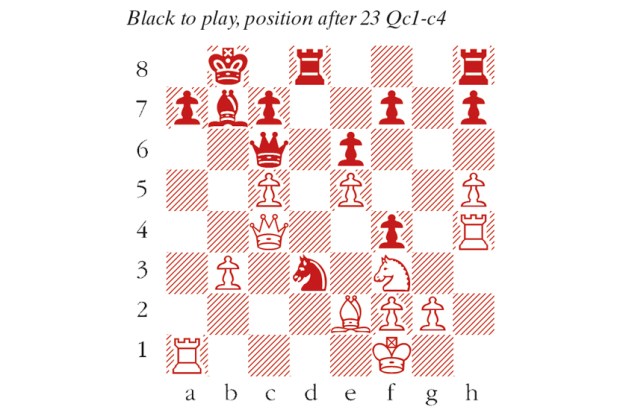
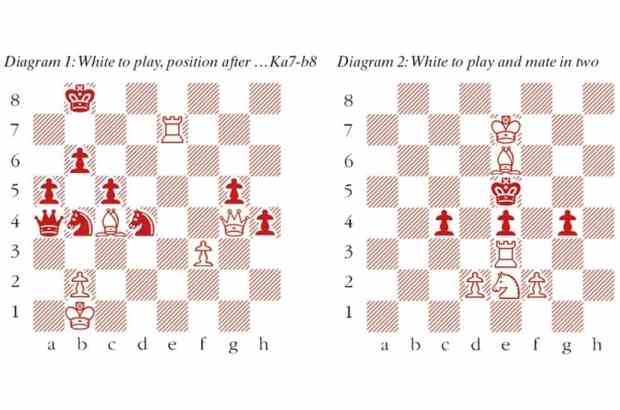
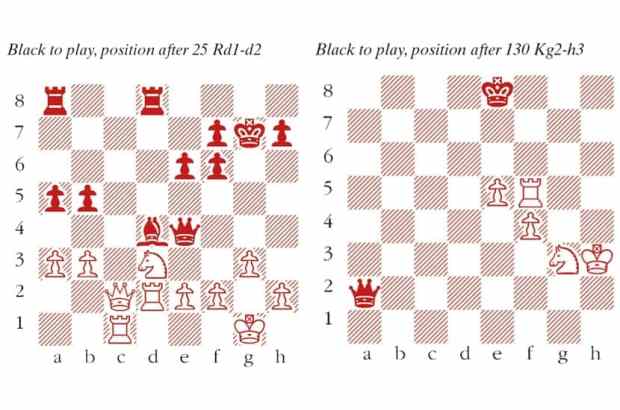






Comments
Don't miss out
Join the conversation with other Spectator Australia readers. Subscribe to leave a comment.
SUBSCRIBEAlready a subscriber? Log in